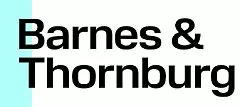- within Intellectual Property topic(s)
- with readers working within the Basic Industries and Retail & Leisure industries
- within Intellectual Property, Cannabis & Hemp and Privacy topic(s)
In chemical and materials patents, we spend so much time perfecting composition ranges and reaction conditions that it's easy to overlook something deceptively simple: grammar. Yet courts frequently decide whether steps "must be performed in the order written" based on logic and syntax alone.
A misplaced "based on" or "then" can turn an intended open-ended process claim into a rigid sequence that narrows scope — or even eliminates infringement.
1. The Subtle Power of "Logic or Grammar"
When drafting process or system claims, pay attention to whether one step logically depends on another. In chemistry-related inventions, that can happen without any explicit time language.
For example, consider the following two claim fragments:
(a) analyzing the concentration of a polymer precursor
and
(b) adjusting the catalyst feed rate based on the analyzed
concentration.
Even though no timing word appears, logic dictates that the analysis occurs before the adjustment. If flexibility was intended (e.g., simultaneous feedback control or pre-set calibration), the claim should say so — perhaps:
"analyzing the concentration of a polymer precursor and adjusting the catalyst feed rate, the steps being performable in any order or concurrently."
That single sentence prevents a "logic or grammar" rule from narrowing the claim to a sequential, two-step process.
2. Functional Claiming in Apparatus or System Contexts
Chemical systems often rely on functional language — controllers "configured to measure viscosity," valves "configured to deliver monomer," sensors "configured to transmit temperature data." When those functions are interdependent, a court may infer that the device's structure requires performing them in sequence.
If your intention is to claim capability rather than choreography, focus on configuration, not chronology:
"a controller configured to regulate
temperature and flow rate"
instead of
"a controller configured to regulate
temperature and then adjust flow rate."
The first covers simultaneous or independent control; the second locks in order.
3. Use the Specification to Frame Intent
Your specification can clarify whether order matters. Add a statement such as:
"Unless otherwise stated, the sequence of operations is not intended to be limiting."
If the order is critical (e.g., pre-heating before adding a catalyst to avoid premature polymerization), explicitly explain why. Inconsistent drafting between examples and claims can create unnecessary vulnerability.
4. A Practical Example from the Lab to the Claim
Imagine you've developed a process for producing a high-performance polymer blend with a nanoscale filler:
Overly restrictive version:
(a) compounding a base polymer with a
compatibilizer,
(b) dispersing a nanoparticle filler based on the
compatibilizer concentration, and
(c) extruding the compounded blend into
pellets.
Because the filler dispersion is "based on" the compatibilizer concentration, the claim implicitly requires that (a) finish before (b) — excluding continuous or co-feeding systems.
Improved version:
(a) combining a base polymer, compatibilizer, and
nanoparticle filler to form a polymer blend; and
(b) processing the blend by extrusion or mixing, the steps
being performable in any order or concurrently.
This version accommodates both batch and continuous extrusion setups — keeping the claim broad and aligned with industrial practice.
Bottom Line
In chemical and materials patents, step order often feels "obvious" from a technical perspective — but to a court, it's a question of grammar and logic. A few extra words can safeguard claim breadth and ensure your drafting reflects scientific reality rather than linguistic accident.
Treat every connector — "based on," "in response to," "after" — as a design choice, not filler. Precision in syntax can be as valuable as precision in stoichiometry.
The content of this article is intended to provide a general guide to the subject matter. Specialist advice should be sought about your specific circumstances.


